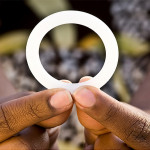An aggressive program to test for HIV and provide immediate treatment for the virus has shown considerable success on various measures in communities in Uganda and Kenya, aidsmap reports.
The SEARCH study enrolled 186,354 adults in those two sub-Saharan African nations between 2013 and 2016. The study randomized 32 communities of about 10,000 people each to receive either the test-and-treat intervention or the standard of care for HIV treatment according to national guidelines.
The intervention included a campaign that focused on multiple diseases, including testing for HIV, diabetes and high blood pressure. Included was a two-week health fair as well as household testing. Anyone who tested positive for HIV was provided linkage to medical care and immediate treatment for the virus, regardless of CD4 count.
During the study period, national guidelines shifted from recommending people with HIV to start antiretroviral (ARV) treatment after their CD4 count dropped below 350 to recommending 500 CD4s as the tipping point.
A total of 90.1 percent of the participants received HIV testing; 19.3 percent of those in Kenya tested positive, along with 6.6 percent of those in western Uganda and 3.5 percent of those in the eastern part of the country. Fifty-seven percent of the participants correctly knew their HIV status before being tested in this study.
In the communities that received the intervention, 60 percent of the study participants began ARVs within six months of diagnosis, compared with 17 percent of those in the communities that served as the control group. Two years after diagnosis, the corresponding respective figures were 80 percent and 40 percent.
By the end of the third year of the study, 79 percent of HIV-positive participants in the intervention communities and 68 percent of those in the control communities had a fully suppressed viral load. This difference was statistically significant, meaning it is unlikely to have occurred by chance. Additionally, compared with the control community members, those in the intervention communities were 20 percent less likely to die during the study; the yearly death rate was 11 percent lower in the intervention versus control communities.
A total of 0.8 percent of the populations of each of the two study groups tested positive for HIV during the study.
Western Kenya, the region that had the highest rate of new HIV cases at the study’s outset, at 0.7 percent, saw the annual diagnosis rate decline 45 percent in the intervention communities by year three of the study. The HIV diagnosis rate saw no such decline in the control communities in this region.
To read the aidsmap article, click here.
To read the conference abstract, click here.
To download the conference slides, click here.
To view a webcast of the conference presentation, click here.







Comments
Comments